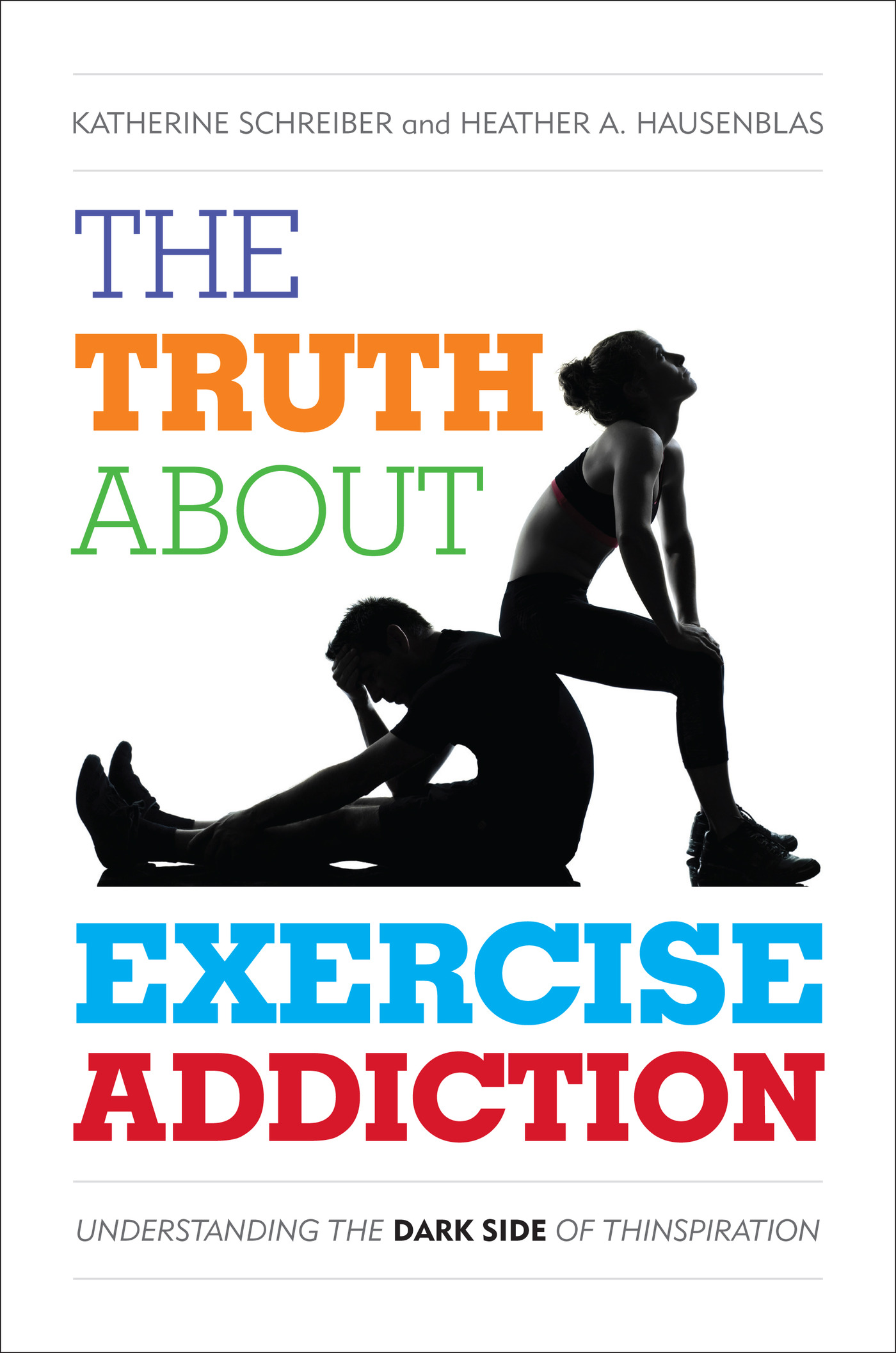The Truth about
Exercise Addiction
The Truth about
Exercise Addiction
Understanding the Dark Side
of Thinspiration
Katherine Schreiber and
Heather A. Hausenblas
ROWMAN & LITTLEFIELD
Lanham Boulder New York London
Published by Rowman & Littlefield
A wholly owned subsidiary of The Rowman & Littlefield Publishing Group, Inc.
4501 Forbes Boulevard, Suite 200, Lanham, Maryland 20706
www.rowman.com
Unit A, Whitacre Mews, 2634 Stannary Street, London SE11 4AB, United Kingdom
Copyright 2015 by Rowman & Littlefield
All rights reserved. No part of this book may be reproduced in any form or by any electronic or mechanical means, including information storage and retrieval systems, without written permission from the publisher, except by a reviewer who may quote passages in a review.
British Library Cataloguing in Publication Information Available
Library of Congress Cataloging-in-Publication Data
Schreiber, Katherine, 1988
The truth about exercise addiction : understanding the dark side of thinspiration / Katherine Schreiber and Heather A. Hausenblas.
pages cm
Includes bibliographical references and index.
ISBN 978-1-4422-3329-4 (cloth : alk. paper)ISBN 978-1-4422-3330-0 (electronic)
1. Exercise addiction. 2. Eating disorders. I. Hausenblas, Heather A. II. Title.
RC569.5.E94S37 2015
613.7'1dc23
2014030124
 TM The paper used in this publication meets the minimum requirements of American National Standard for Information Sciences Permanence of Paper for Printed Library Materials, ANSI/NISO Z39.48-1992.
TM The paper used in this publication meets the minimum requirements of American National Standard for Information Sciences Permanence of Paper for Printed Library Materials, ANSI/NISO Z39.48-1992.
Printed in the United States of America
Acknowledgments
Katherine thanks Sandy Marks for his love, support, and impeccable patienceall of which has inspired her to maintain hope and inspiration throughout the writing of this book.
She also thanks David Tao, Zachary Sniderman, and Derek Flanzraich for letting the seeds of this book take root on Greatist.com. This book would not have been possible without the enthusiastic, insightful, and immensely helpful input from Jodi Rubin, Angie Lockwood, Carolyn Costin, Lara Pence, Judith Brisman, and Keri Peterson.
Infinite thanks to Kaila Prins, Charlotte Andersen, Colleen Siti, Myles Alexander, Ben Carter, Arielle Norman, Marion Maclean, Jennifer Hicks, Emily Duncan, Kate Hanisko, B, and Catherine Goldberg for their bravery and openness in sharing their experiences. May you all succeed in your recovery efforts and know that your stories will inspire many others.
Most importantly, Katherine thanks Heather Hausenblas for her enthusiasm, willingness, and collaboration on this needed resource. Much gratitude is also due to Suzanne Staszak-Silva, our editor, whose interest and careful eye enabled this book to come into being. Many, many thanks to Stephanie Scuiletti for moving this book forward, step by step. And a standing ovation to Erin McGarvey for her phenomenal copyediting job and unparalleled attention to detail.
Heather thanks the many undergraduate and graduate students and colleagues who have inspired her and taught her so much about the psychology of health during the last twenty years. In particular, Danielle Symons Downs, her former graduate student and now treasured colleague, with whom she spent countless hours developing the Exercise Dependence Scale, entering data, and trying to understand how people can become addicted to exercise.
A special thank you to our editor Suzanne Staszak-Silva. Her support and insight made this book possible.
Heather also thanks her husband, Todd, and three boys, Tommy, Scotty, and Johnny, for making every day an adventure filled with love.
Finally, Heather extends her highest gratitude to Katherine Schreiber, who reached out in June 2013 to provide insight into an article she was writing on exercise addiction. Heather instantly liked her contagious enthusiasm for trying to understand exercise addiction. Two months later Heather and Katherine began to write this book together. Katherine was the main driving force in getting this book completedher unstoppable work ethic and passion are an inspiration.
Heather dedicates this book to Bert Carron, an incredible mentor and friend. His spirit, vitality, and passion for his profession will remain in Heathers memory infinitely.
Chapter 1
What It Is
Defining Exercise Addiction
Maybe youve noticed a particularly avid exerciser at your fitness clubsomeone who predictably occupies a cardiovascular machine for noticeably long lengths of time or hovers around the weight room well after others have toweled off and called it a day. Perhaps youve even felt lazy by comparison or in awe of this persons apparent stamina. But did you ever wonder whether his or her ostensibly healthy drive to stay fit might be bordering on pathology?
Can people really become addicted to exercise? The answer is yes. But the questions are who, why, how, where, and when.
Exercise addiction is thought to afflict an estimated 3 percent of regular gym-goers. it can strike at any age.
The largest prevalence study to date was conducted with a national representative sample of 2,710 Hungarian adults aged eighteen to sixty-four years. Small as this number may seem, however, it still translates to roughly thirty out of every ten thousand people. Given the physical and emotional consequences associated with these high-risk cases (as youll learn in chapter 5, What It Does: The Short- and Long-term Health Risks of Exercise Addiction), thats no insignificant number.
As far as race and socioeconomic status are concerned, not enough research has been done yet to definitively point toward any trends or predictors. But considering that the risk of exercise addiction is higher among more active groups of people, we can assume that the demographic factors predictive of greater exercise behavior in general would also predict higher rates of exercise addiction.
For instance, it has been found that individuals with higher levels of education engage in more physical activity. So one can assume that being a minority may predict a lower prevalence of exercise addiction. Considering that most exercise addicts gym memberships comprise a large part of their life, the cost of such memberships should also be factored in. Those at lower ends of the socioeconomic spectrum may not be able to finance an addiction to exercise simply because they cannot afford the membership, equipment, and accoutrements (from running shoes to energy bars to yoga gear, weights, exercise classesyou name it!) that a high commitment to exercise often calls for.
That being said, race and socioeconomic factors are by no means inflexible barriers to developing overzealous passions for exercise (or not). But the likelihood of a full-blown addiction to physical activity cropping up may be weaker among individuals with less education and at lower ends of the socioeconomic spectrum.
Exercise addiction is a pattern of physical activity that exceeds what most fitness and medical professionals consider normal, causes immense psychological anguish (either during, following, or in anticipation of exercise), engulfs an exercise addicts personal, professional, and social life, and is experienced by the addict as difficult to control or reduce in frequencyeven in the face of illness or injury.
It is a self-perpetuating craving for movement that results in uncontrollably excessive physical exertion and manifests in mental and physiological distress. If a person reports feelings of anxiety and depression when unable to exercise, spends little or no time with family or friends because of physical activity involvement, or continues to run despite a doctors advice to allow an overuse injury to heal, he or she could be considered at high risk for exercise addiction.
Next page
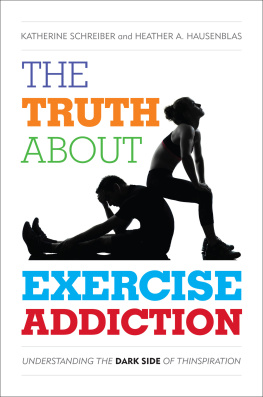
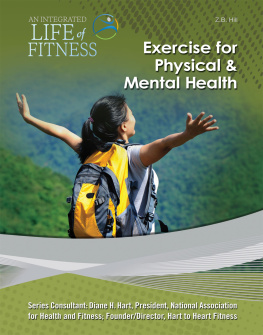
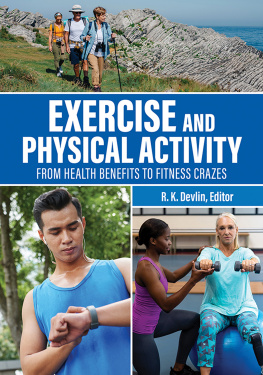


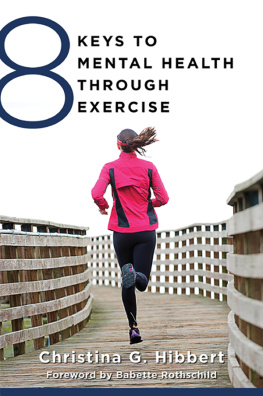

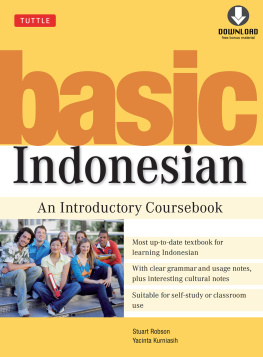
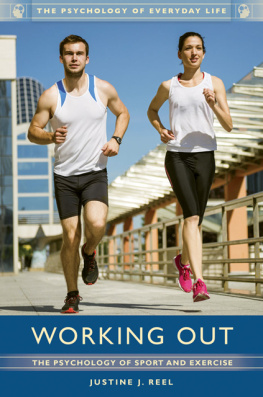



 TM The paper used in this publication meets the minimum requirements of American National Standard for Information Sciences Permanence of Paper for Printed Library Materials, ANSI/NISO Z39.48-1992.
TM The paper used in this publication meets the minimum requirements of American National Standard for Information Sciences Permanence of Paper for Printed Library Materials, ANSI/NISO Z39.48-1992.